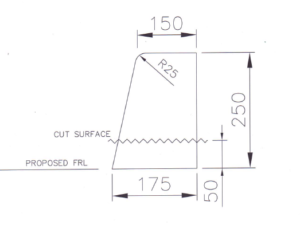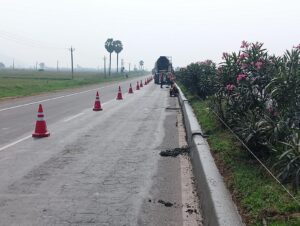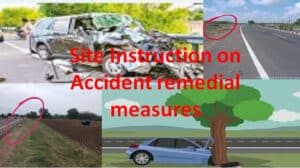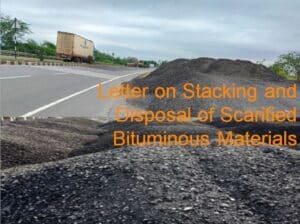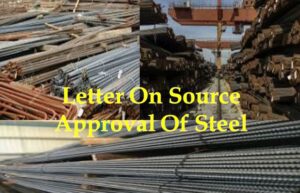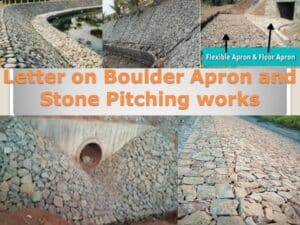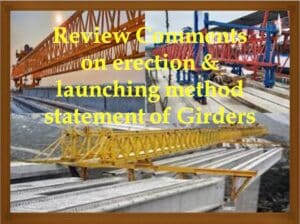Kerb Height Raising Methodology
Let’s discuss the Kerb Height Raising Methodology.
During operations, the kerb height may drop below necessary levels. This may be due to:
- frequent pavement renewals,
- embankment settling, or,
- Vehicle impacts cause damage.
To fix this, raising the curb height is critical.
To rectify the kerb height under good industry practice and for quality assurance, a procedure is needed. Also, as outlined in Schedule B of CA, under the project’s scope, the concessionaire’s commitment to appropriate quality in conformity with the specifications and standards. Consequently, a detailed method statement for raising curb height is essential.
This article will establish the procedures and methods for the Kerb Height Raising Method. It will collect the concessionaire’s input and observations on the methodology by the IE.
Letter 1: The Kerb Height Raising Methodology Submission.
The following is a sample draft letter format for submission of kerb height-raising methodology. The letter is submitted to the independent engineer. And I am requesting their review and approval of the Kerb Height Raising Methodology. The same has been adopted for the project highway.
| To
The Highway Authority, Subject: Submission of curb height-raising methodology. Dear Sir, On the project highway, an asphalt coating reduced the existing kerb height. So, we’ve got a method to bring the curb height back to normal. We’ll use a bond age called Nitobond EP, and we have a plan for raising the median and side kerb. Right now, the curb is under 225 mm. This is for your kind information and approval, please. Kerb Height Raising Methodology:1.0 General This work will consist of constructing a cast-in site kerb with M20-grade concrete in the central median and toe. These are in accordance with the specified lines, levels, and dimensions, as well as MORT&H clause 408. 2.0 Purpose The statement’s primary goal is to raise the median kerb, which BC’s top surface overlay has reduced to a height of 225 mm. 3.0 Material
4.0 Traffic Arrangements and Control
5.0 Tolerances The vertical and horizontal tolerances for the true line and level will be +/- 6 mm, as per MORT&H clause 408.5.5. The drawing for the relaying kerb is as follows:
Kerb Height Raising Methodology: Construction Procedure
7.0 Kerb Painting I will attend the curb pre-painting activities. The activities will include removing all peeling film from existing or old paint removal mechanisms using the appropriate tools and equipment. And duly cleaning the surface before the application of a new coat of paint over the kerb for durability, legibility, and reflectivity as per standards and good industry practices. And the curb painting pattern shall be as per IRC:35.
Equipment, Tools, and Tackles: 8.0
9.0 Material
Kerb Height Raising Methodology: Nito Bond Application ProcedureSurface preparation (1.0) Attention to the substrate’s full and proper preparation is essential for complete repair adhesion. 1.1 Clean all surfaces and remove any dust, unsound materials, oil, paint, or grease. 1.2 Also, roughen the surfaces and remove any laitance. And expose the aggregates by any suitable means. 1.3 Additionally, thoroughly clean the concrete for any other contaminants. Instead, clean the exposed and straightened steel bars until they are uniformly bright. The repair edge should be hardened to provide a good mechanical key at the substrate interface. 2.0 Mixing 2.1 The concrete substrate primer shall be Nitobond EP. 2.2 Ensure that the Mitobond EP is thoroughly mixed. 2.3 To disperse any settlements, stir the “hardener” and “base” components separately before mixing. 2.4 After pouring the entire contents of the ‘hardener’ tin into the base tin, thoroughly mix the two materials for two minutes with a suitable slow-speed drill and mixing paddle to achieve a fully uniform color. After scraping the sides of the tin, continue mixing for another 2 minutes. Apply the Nitobond EP as soon as the mixing process is complete. 3.0 Application 3.1 Take care to ensure an unbroken coating. 3.2 Use a suitable brush to scrub Nitobond EP into the surface, ensuring an unbroken film. 3.3 Before placing the repair mortar (ovaries), let the coated substrate sit for two hours. 3.4 You can place the overlay at 40 degrees Celsius within 6 hours. If any doubts arise about temperature, make sure that Nitobond EP is still tacky by physical checking. 3.5 After applying Nitobond EP, make any necessary formwork corrections and secure them in place. This is for your kind perusal and approval. [Yours,] [Insert the name of the authorized person]. |
Note to Visitor
The above-stated procedure for the Nito bond serves as a sample format. The purpose is to make the necessary modifications to meet modern work procedures. And to regularly update specific adhesive manufacturing company guidelines about the product and material.
****************************************************************************************************************************************************************************************************************************************
Letter 2: Review and Observations on Kerb Height Raising Methodology.
Kerb Height Raising Methodology: Review and Observations: The following is a sample draft letter format for independent engineer review and observations on the submission of kerb height raising methodology.
| To
The Concessionaire, Subject: IE review observations and comments on the submitted kerb height-raising methodology. Dear sir, We have examined the methodology you provided in your letter. We would like to suggest some changes in the method statement, as outlined below. Methodology for Re-laying the Kerb Activity: Re-laying of the kerb
The kerb-height-raising activity on Project Highway is shown in an image. Kerb Height Raising Procedure and Methodology: Review of ObservationsThe selection of Kerb Height Criteria for Rectification is underway.
Kerb Height Raising: Equipment, Tools, and Tackles.
Material
Kerb Height Raising Methodology: Conclusion Therefore, please review and modify your submission before resubmitting it for approval. The submission also includes a drawing of the curb for relaying. Thank you while ensuring our best services. [Yours,][Insert the name of the authorized person] |
Additionally, you can find various sample draft formats for highway operation and maintenance correspondence.
On Project Highway, you can find a sample draft letter format for joint site inspection notification to the concessionaire or contractor. Click here for more information.
Kerb Height Raising Methodology: FAQs
will update shortly

